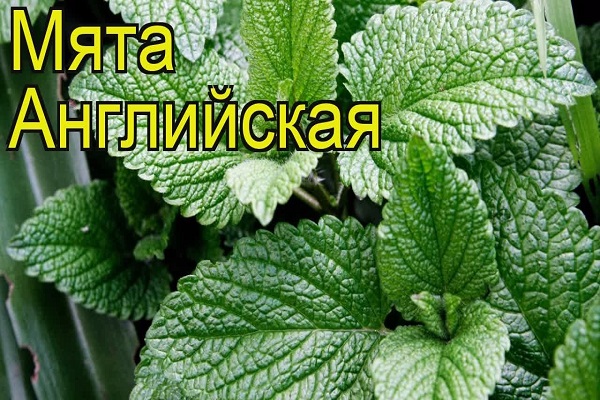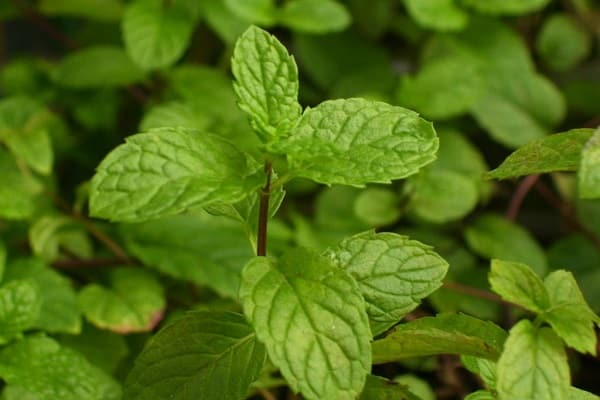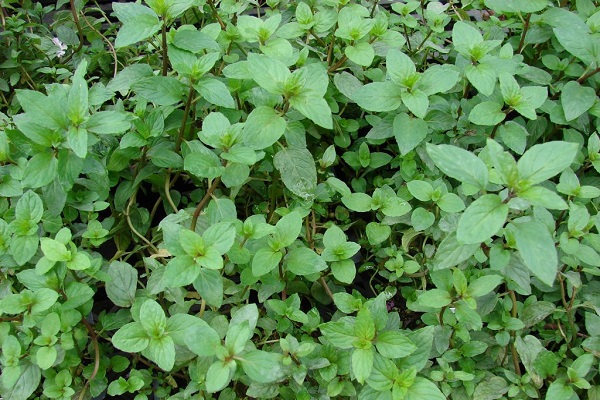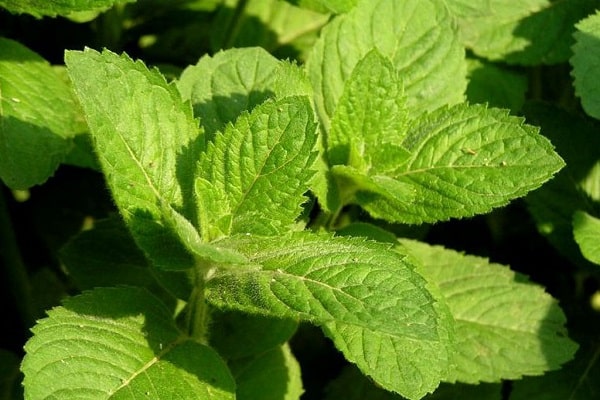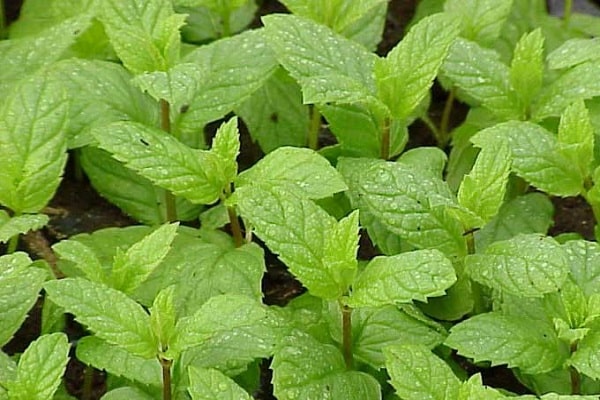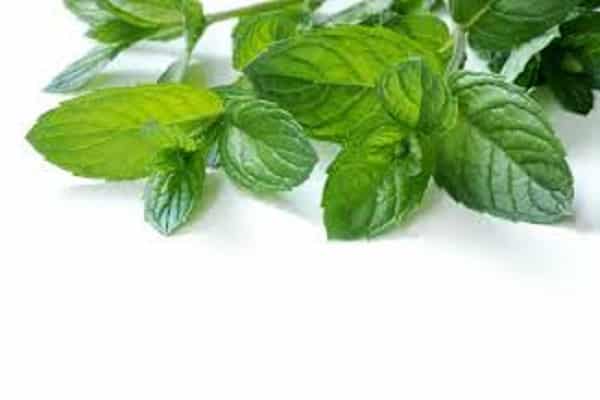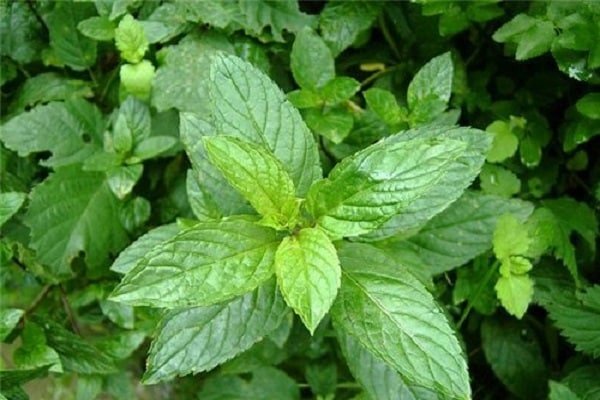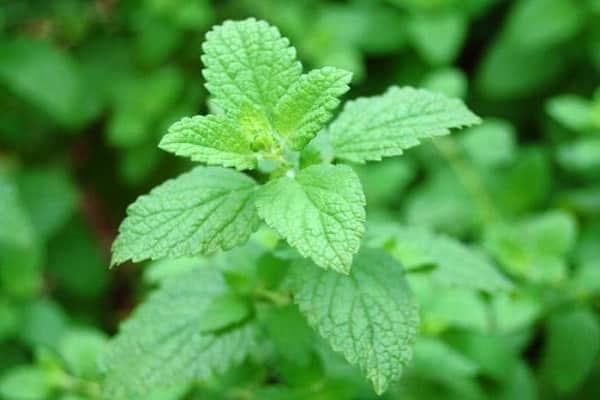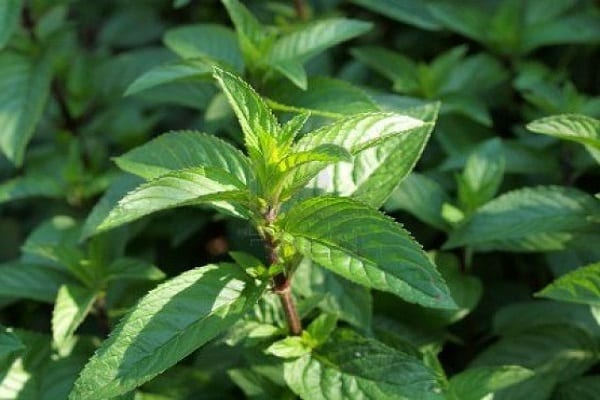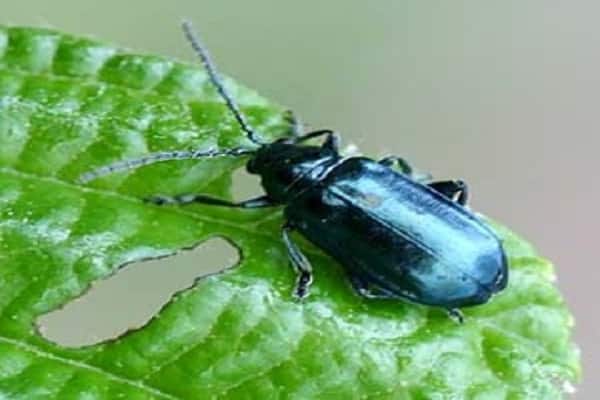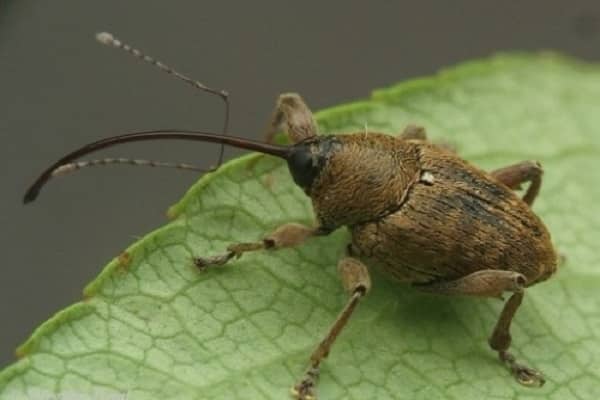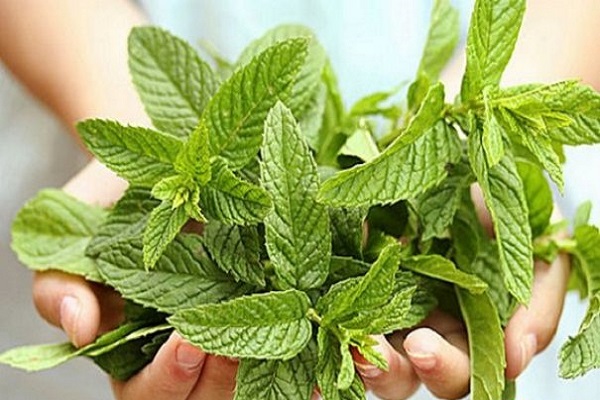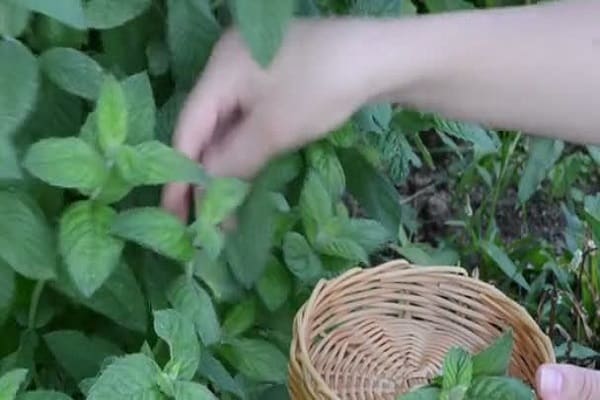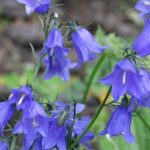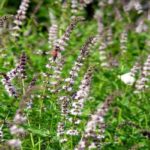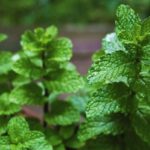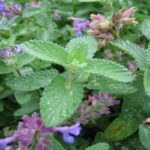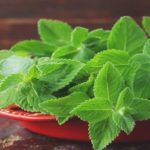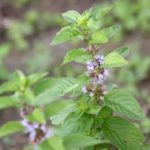English mint is popularly called chilli mint or chilli mint. This variety is valued for its life-giving properties and wide range of uses. It was bred by crossing wild subspecies - aquatic and spikelet.
Features of the variety
English mint is a herbaceous perennial that reaches a height of 1 m, with a chill when bitten and a distinct aroma. The rhizome is located close to the soil surface. Its foliage is ovoid, pointed in shape. It produces small flowers; its corolla is bare, with a lilac edge.Flowering lasts from June to September. English mint is represented here by two common types - black and white.
Conditions for the growth of English mint
The yield of mint is greater in nitrogen-containing soil. But all good things should be in moderation, because excess nitrogen in the soil can lead to the formation of rust on the leaves. Fragrant mint loves moisture and sun, but it does not tolerate dry heat well without additional spraying. The perennial grows comfortably at a temperature of +18…+20 °C.
With increasing temperature, a decrease in the menthol content in the leaves is observed. In harsh winter conditions, the perennial can withstand temperatures dropping to -10 °C. But if this temperature level is observed at the depth of unprotected roots, then they die almost immediately. In the presence of a snow cushion up to 20 cm deep, life-giving mint can tolerate temperatures down to -25 ° C.
Planting time
If the perennial is grown at home, then the selected seeds can be planted at any time, there are no restrictions. Thanks to its excellent frost-resistant qualities, life-giving mint can be planted in cool soil in the fall.
When sowing selected samples in garden soil, the planting period without seedlings is observed: the end of April - the beginning of warm May.
Preparation of planting material
Since the selected seeds are too small, the process of sowing in open ground must be approached with the utmost seriousness.
Ripe mint seeds can be purchased at a specialty store or collected independently. Before sowing, material is selected at home and only mature specimens are left. Selected mint seeds have a low germination rate; 2-3 seedlings can come out of 1 bag.
Preparing the landing site
Before placing life-giving mint in the ground, it is necessary to prepare the area.First, you need to carefully dig up the selected area by 20 cm. Add 3 kg of high-quality humus per 1 sq. m. m. Do not forget about 2 tbsp. l. wood ash, 15 g ammonium nitrate. All these actions will help turn any selected area into a comfortable place for the growth and development of perennials. If the groundwater is too close to the surface, then it is better to make an elevation at the site of planting life-giving mint.
Planting a crop
Prepare grooves for fragrant mint, maintaining a distance of 20-30 cm. To make planting convenient, use a stick with a pointed end or a planting syringe for seeds, since mature specimens are very small. They are buried 5 cm, carefully sprinkled with earth, and watered to avoid erosion by water.
If the seeds are planted for seedlings, then when the young shoots reach 6 cm in height, they can be safely moved to open ground.
Mint care rules
Gardeners who decide to grow aromatic English mint on their plot are lucky, because for its normal growth and development it is necessary to put in a minimum of effort due to its unpretentiousness. A perennial can develop in one place for up to 5 years; after this period it needs to be replanted. Bushes must be rejuvenated by emergency pruning.
To prevent the intensive spread of mint throughout the area, it is necessary to establish special restrictions. In places where the soil is depleted, fertilizers are applied for the development of mint. To prevent the fragrant plant from stretching, choose illuminated areas.
Watering
English mint loves moisture in reasonable quantities. It does not tolerate waterlogged soil, which causes the roots to rot. Therefore, perennials need high-quality watering.
Loosening and weeding
Periodic loosening of the soil and weeding of the tree trunk from insidious weeds are mandatory procedures that must be performed by every gardener who has English mint on his plot. Loosening the soil provides an additional flow of oxygen to the roots; this should be done once a month.
Diseases and pests
Aromatic mint is a perennial that is attractive not only to people, but also to pests.
From the moment the first leaves grow, she has been plagued by the mint flea beetle, which makes round holes in the leaves. During the period of dry and warm spring, the risk of attack by this pest is very high.
Aphids destroy the upper part of the young shoot. Weevils infect the edges of leaves. The meadow moth can completely destroy a perennial. The wireworm can spoil the root system. What are the main methods of controlling these pests? In case of severe damage, potent insecticides are used. Spraying procedures must be carried out 30 days before the start of harvest.
It is better to do without the use of potent substances in the garden plot; replanting the perennial once every 2 years will be a preventative measure. Spraying with a prepared celandine solution is also carried out.
Like all perennials, life-giving mint is susceptible to various ailments. Most often, it suffers from powdery mildew, from which it can be saved by deep autumn digging of the soil and spraying with a solution of colloidal sulfur.
Leaf spotting - it is characterized by the appearance of brown spots on the leaves with black dots; spraying with Bordeaux mixture will help save the crop.
The fast-growing rhizome is infected by mycoplasma. The only way to get rid of these destructive pests is to destroy the infected plant and transplant healthy specimens to another location.
Timely application of phosphorus and potassium will help strengthen the protective properties of the perennial.
Collection and storage
To harvest young mint correctly, there are recommendations. You cannot pluck shoots with your hands; it is better to carefully cut the stem. It is cut to a third of the total length. During the period of active flowering, menthol extract is obtained from the shoots. If you need to dry a crop with stems, it is better to do this before budding begins. The collection of mint for making fragrant tea begins in early spring; the peak harvesting season occurs in hot July. Collection is carried out 1-3 times a month. It is better to cut shoots in the evening on a dry day.

